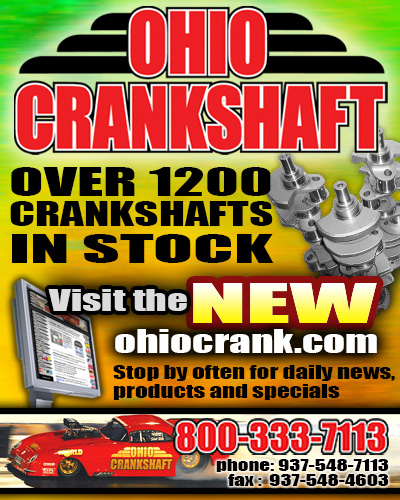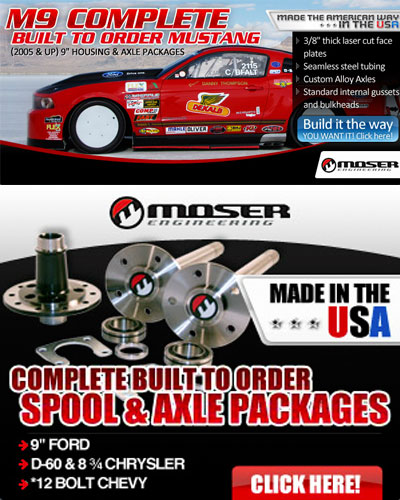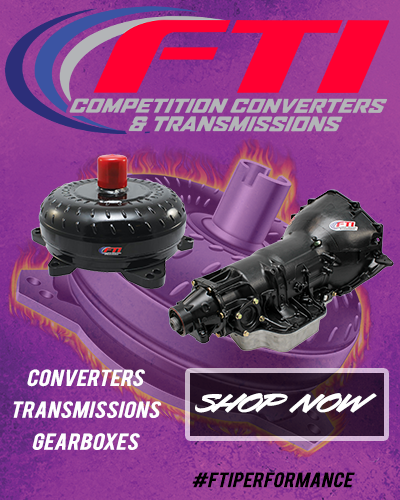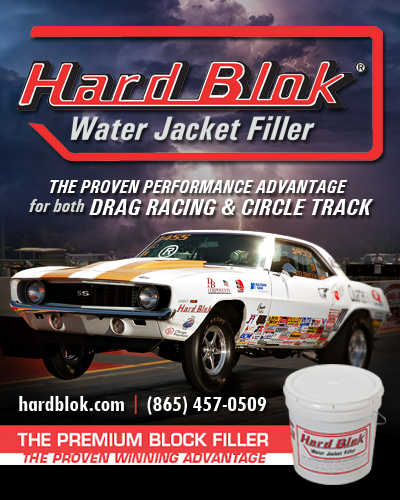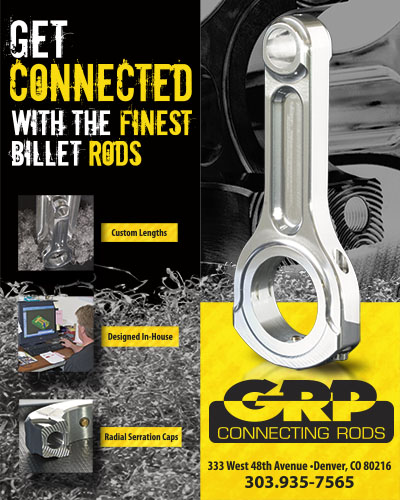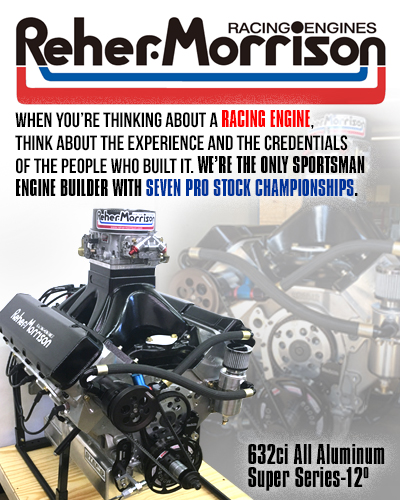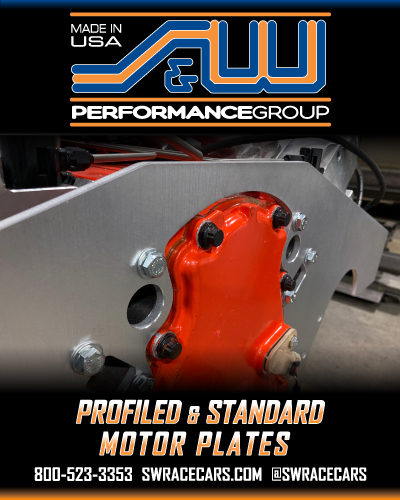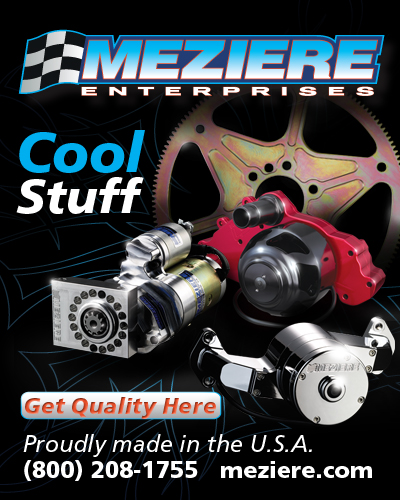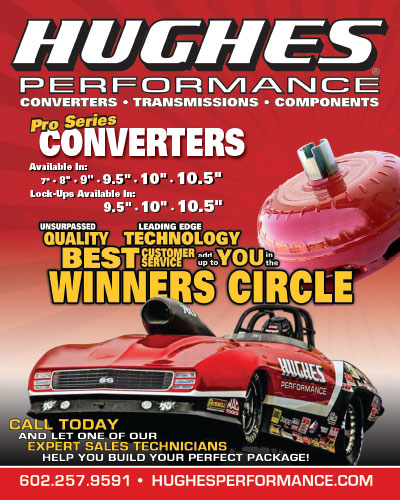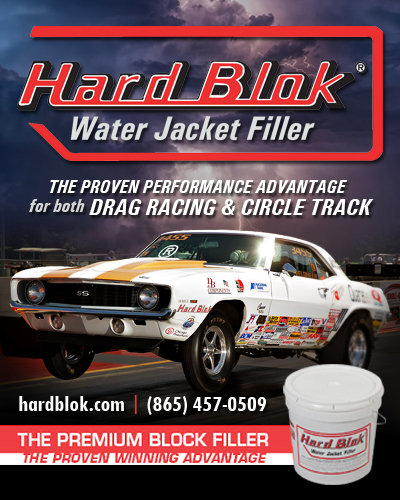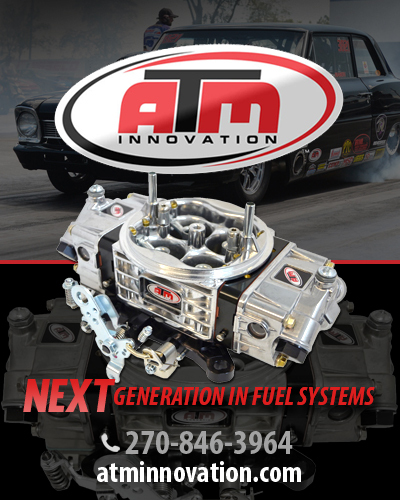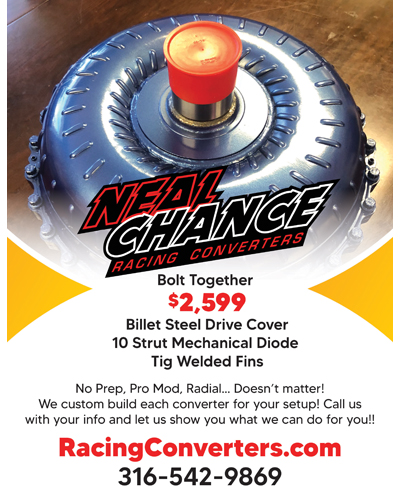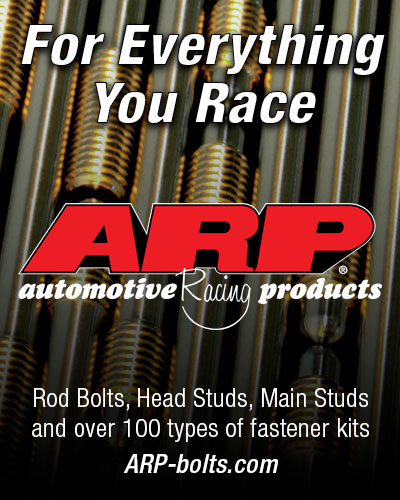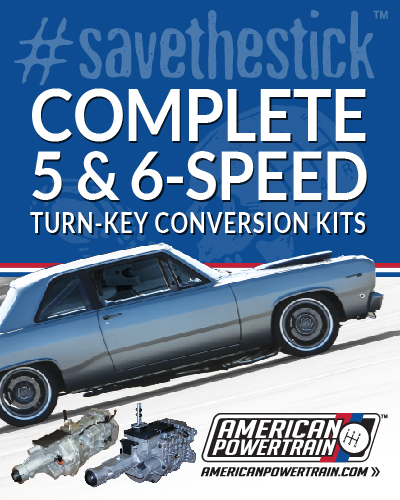Q&A WITH DON SCHUMACHER
Don Schumacher has built a high-profile, championship-winning, multi-car NHRA drag-racing team in a short period of time.
A former Funny Car driver who starred on the match-race and national-event circuits in the 1960s and 1970s, Schumacher returned to NHRA professional competition as a team owner in 1998. In his first full season as an owner, Schumacher and his son, driver Tony Schumacher, captured the 1999 NHRA Top Fuel championship.
In 2001, Schumacher added his first Funny Car team - Whit Bazemore in the Matco Tools Funny Car - and, in 2002, Scotty Cannon in the Oakley Funny Car. In 2003 four-time Top Fuel champion Gary Scelzi came on board to drive the Mopar/Oakley Dodge Funny Car and earned his and DSR's first Funny Car crown in 2005. DSR also campaigned a second Top Fuel car driven by Melanie Troxel and sponsored by Torco Race Fuels from the last half of 2005 through 2006.
Don Schumacher has built a high-profile, championship-winning, multi-car NHRA drag-racing team in a short period of time.
A former Funny Car driver who starred on the match-race and national-event circuits in the 1960s and 1970s, Schumacher returned to NHRA professional competition as a team owner in 1998. In his first full season as an owner, Schumacher and his son, driver Tony Schumacher, captured the 1999 NHRA Top Fuel championship.
In 2001, Schumacher added his first Funny Car team - Whit Bazemore in the Matco Tools Funny Car - and, in 2002, Scotty Cannon in the Oakley Funny Car. In 2003 four-time Top Fuel champion Gary Scelzi came on board to drive the Mopar/Oakley Dodge Funny Car and earned his and DSR's first Funny Car crown in 2005. DSR also campaigned a second Top Fuel car driven by Melanie Troxel and sponsored by Torco Race Fuels from the last half of 2005 through 2006.
Today, four Top Fuel and one Funny Car NHRA POWERade Drag Racing Series championships later, Schumacher fields seven teams: one U.S. Army-backed Top Fuel car for Tony Schumacher; three in Funny Car for Scelzi, Ron Capps (Brut Revolution Dodge Charger) and Jack Beckman (Mail Terminal Services Dodge); two U.S. Army Pro Stock Motorcycles for Angelle Sampey and Antron Brown; and the Team Mopar/Valspar Dodge Stratus Pro Stock car for Richie Stevens Jr., run in partnership with Allen Johnson's J&J Racing Dodge team.
Last weekend, at the famed Gatornationals at Gainesville (Fla.) Raceway, the third race of the 2007 season, DSR won both fuel classes, as Tony Schumacher claimed Top Fuel and Ron Capps Funny Car. Earlier last week, Schumacher was inducted into the International Drag Racing Hall of Fame.
In all, since 2001, DSR teams have doubled-up in event wins 12 times, and tripled-up twice (in 2004 at Reading when Scelzi, Schumacher and Sampey won their classes; and in 2006 at Las Vegas 2, when Beckman, Schumacher and Stevens Jr. won their classes).
We sat down with Schumacher and asked him a number of timely questions, from Eric Medlen's testing accident on Monday, to his future plans for DSR and his induction into the International Hall of Fame.
1. Q. Do you have any thoughts regarding the recent Eric Medlen accident?
A. I have many, many thoughts in reference to Eric's accident. The amount of cars that contacted the guardrail Sunday in Gainesville is concerning, and there were numerous cars that crossed the centerline in both Pomona and Phoenix. These numbers seemed to have increased from any of the past seasons. We need to review what's causing these things and take steps to minimize these incidents. We're talking about professional drivers, and, yes, some of whom are relatively young and relatively new at driving these cars, but they are professionals and have shown their abilities to drive these cars very successfully.
The increase this year is substantial and I'm wondering if we don't need to do something to make the groove - as the teams, owners, crew chiefs and drivers talk about - wider on the race track. So, if the car moves around a little bit, it doesn't lose traction as much as it has at these three races of the year so far.
What happens is you lose traction on one tire and it starts pushing you real hard in the other direction because your other tire is still hooked up pretty well. And when they start spinning the tires out there, especially with Funny Cars, they'll start to drop cylinders, and if you drop two cylinders on the same side of the engine the cars really move hard, and those are some of the concerns I have.
NHRA has a tire machine that should be brought to all of the races and should be utilized to increase the width of the groove at all of these race tracks on which we compete. It would improve the show for the fans, it will make it safer for the drivers, and it will be better all around.
2. Q. Once the groove is widened, how long does it last as a wide groove?
A. I think this is a new learning experience as to how effective that will be. We have to take some steps to make some changes to what we're doing and track prep and the width of the groove are two of the changes that I believe we need to make. The groove will certainly last the duration of the race unless we get some severe weather that comes in and washes the rubber off the race track. When you have rain, the rain gets underneath the rubber and then the rubber comes up, which means you need to have the tire machine available at every race track, every day, during the course of the national meets.
3. Q. We had heard earlier this year that the NHRA Safety Safari would be prepping the track on Monday test days. From what you understand, was that the case in this situation?
A. The track was prepped on Monday. I don't know that NHRA's Safety Safari prepped it or NHRA's employees at Gainesville prepped it, since the facility is owned by NHRA. I was not at the test session on Monday. The word I got back from my people is that there was an awful lot of what we call glue or traction compound sprayed down on the race track on Monday and it was very, very sticky, and it was actually pulling some rubber out of the tires during a run. We had no number of those experiences during the race weekend Friday, Saturday or Sunday with the fuel cars.
So, there was a change for Monday that caused some tires to get torn apart some. And this means 10-cent or 25-cent chunks being pulled out of the tread of the tires. It doesn't mean the tire itself was being pulled apart. It does enough damage to the tire that the teams won't run the tire again, but they are totally safe.
Having the Safety Safari there on Mondays is wonderful. It's a great change that was made in 2006, but at the races and during qualifying Friday, Saturday and Sunday, after every run of a fuel car, there's a number of NHRA personnel who go over the wall to check the race track for any potential debris being on it, where a car will lose a nut or a bolt, a Dzus fastener, or any number of little things. Those people are not there on Monday, and nobody knows what really caused Eric's accident at this point. Was there some debris on the race track that caused the tire to get cut down? I don't know. That is a concern that I have personally that doesn't get taken care of at Monday test sessions. And the teams can only do so much. But PRO (Professional Racers Organization of Top Fuel, Funny Car and Pro Stock team owners) and the teams need to come together and create a safer atmosphere on Monday for these drivers to be able to test in.
4. Q. Your team had a great weekend in Gainesville, winning two classes on top of your being inducted into the Hall of Fame. Which meant more to you?
A. The whole weekend was very very important and rewarding to me, both on a personal basis and on a team basis. And I really can't separate the two. It's a great honor to be able to win two fuel classes on Sunday in Gainesville, but it's also a great honor to be inducted into the International Drag Racing Hall of Fame.
5. Q. What does that honor mean to you?
A. I'm honored, to say the least, to be inducted into the International Drag Racing Hall of Fame, but I'm truthfully humbled to be able to see my name among the people in there. Don Garlits has done a phenomenal job in putting this thing together. It not only represents NHRA, but AHRA, IHRA and even drag racing overseas. It's a wonderful, wonderful honor.
The other people who were inducted are all very, very well-known heroes of the sport. I'm just very fortunate to have been able to accomplish what I accomplished in the '60s and '70s and now again in the late '90s to 2007 and to be able to be recognized that way.
6. Q. Who did the actual induction at the banquet?
A. My best friend Ron O'Donnell, who has been a buddy of mine from the beginning of my racing days, back in the '60s. It was just wonderful to have somebody who knows all of my history who is basically a family member do the induction.
7. Q. You are clearly committed to fielding a number of teams in NHRA. You have seven now. What would be your ideal "comfortable" number of teams or is this it?
A. I don't have an ideal comfortable number of teams in mind. I would gladly add another Top Fuel team at this point, if the circumstances presented themselves and were right for my sponsors and the team to do so. To add any additional teams beyond that, it would have to be the correct business thing to do and the correct thing to do for the sport and for Don Schumacher Racing and the sponsors.
8. Q. With all the stress that comes with being a multi-team owner, do you ever feel like packing it all in?
A. We all have good days and bad days, and your feelings go up and down very quickly on different days. I'm a businessman, I love what I do, and I can't say that I have ever had a desire to pack it all in and quit. But I do have extremely euphoric and down times that make you wonder about a lot of things.
9. Q. Do you feel you have accomplished the goals you have set to satisfy your many sponsors or on your way to accomplishing them?
A. I'm never satisfied with what I have accomplished. I always look to make it better for my sponsors, my teams, my organization, my people and my family. I always strive to improve and make it a better situation for everybody.
10. Q. You made a wise move to partner with J&J Racing in the Pro Stock class with Richie Stevens, but it's still been a tough class to master. Any plans to make changes there?
A. No plans to make changes there. We will continue to work as hard or harder than anybody else out there. And when I say harder, it's pretty tough to work harder or as hard as Greg Anderson and Jason Line and that whole KB Racing/Summit team. But Allen Johnson and his father Roy and that whole team and Richie, are very committed to go out and work as hard as they can to accomplish their goals.
11. Q. You were instrumental in designing race-car safety features in the past. Do you have any current recommendations to improve the safety of this sport?
A. I do have thoughts and things that I want to really deal with on a professional basis with people who have been very instrumental in safety in NHRA and racing for years, like Bill Simpson, Murf McKInney, Brad Hadman and all of my crew chiefs and other crew chiefs in the sport. There are professionals out there who should be able to bring some additional safety features for these drivers. Should we do more with carbon fiber and the cockpit area? Should we change the way the helmet and the head are supported in these race cars? There's a lot of thoughts that go on when something like Eric's accident happens that you really wonder what is it that you can do to make these cars safer and better.
I don't think a step to slow the cars down would help anything at all. if this crash happened with a car whose top speed was 300 mph versus Eric's car that can run 330 mph, that 30 mph I do not believe would be the margin of not injuring somebody to injuring somebody. I used to drive these cars, I've talked to my son and some of my other drivers, and the reality is, when you crash, you're either lucky or unlucky. You're lucky that you don't get injured, or you're unlucky and you get injured.
The cars are built very, very safely. The facilities are very, very safe. But we always look to make it better.
12. Q. One of the assets DSR has is the ability to share information among all its teams. Yet, the teams compete against each other. How has this been working for the team?
A. It has worked great the last couple of years, and it's working probably at its best this year than it's ever been because of the years of experience we've gained with the multi-car teams in the same class, whether it be Top Fuel or Funny Car, and the personnel that are in place. This is a people business, as every business is. And it's been difficult at times, but it's working very, very well this year.
13. Q. How many more championships would you like to win?
A. It is so difficult to win a championship. I have been rewarded tremendously by the five championships that my teams have won since I came back into the sport in 1998, 1999 being the first year that my team had won a championship. My goal is to win every championship that is available to us, but the reality is it's very, very special to win any of them.
We work just as hard as we can possibly work to win every championship that is available. My goal is to win every championship that is available, but I am a realist also and I know how special a championship is.
14. Q. Could you update your status with Schumacher Electric? We heard somewhere that there were some changes.
A. Schumacher Electric is not for sale, so any speculation on that should be clearly understood. I resigned as president of Schumacher Electric, and I have put key people in place and promoted a man by the name of John Waldron as president of Schumacher Electric, because he deserved to be president, and not so I could retire.
We have about 1100 employees here in the United States, in Mexico and in China in total. And we're the largest automotive battery charger manufacturer in the world.
I am still the CEO and Chairman of the Board. I have no interest in retiring from Schumacher Electric, Don Schumacher Racing or Schumacher Motorsports.
Schumacher Motorsports has two merchandise trailers, and the 100,000-sq. ft. building and property there in Indianapolis. That's also where I run Pro Nitro out of, where I import nitromethane from China and sell it to the industry.
Schumacher Electric is the official battery charger of NASCAR and, as of 2007, we have a licensing agreement with NASCAR.
Q. What changes would you like to see within the NHRA?
A. We need to increase the size of our fan base, which is increasing. The sport is a tremendous, tremendous sport to watch when you are at the facility when these cars run. It hasn't translated as well to TV, so something has to be done in the programming, the way it's being filmed and the way it's being covered to get that the same dramatic action translated to the TV that we see at the facilities.
We also need to have some of the races televised live rather than tape-delayed, or at least the final round, if not the semifinal and final rounds.
We need to expand the sport in fan appeal. We need to get young, middle-aged fans out to the races and enjoying them, and watching them on TV. We need to make stars out of these drivers beyond where they are. They're great personalities, they're great characters; we need to take that to the next level. We need our sponsors to use the drivers and the teams in their advertising.
We need to make the sport safer for the drivers and the fans. We need to increase the overall income or funding for the sport so a driver who is taking the chances by driving one of these cars is adequately compensated. And I don't believe that is the case today. Even though these guys and women make a pretty good income, when you compare their income to the income of NSACAR, or Formula 1 or some of the other motorsports, they do OK, but certainly they don't compare to those other motorsports. And the only way that's going to happen is to increase the fan base, increase the sponsorship desire to come into the sport and increase the overall funding.
Let's hook this sport to a rocket ship. Let's not just take it to the next level; let's step it up four or five levels and make it really, really good for everybody.
Q. Is there anything
you would like to add?
A. Our prayers and our thoughts go out to Eric, John and Mimi Medlen and the whole extended John Force Racing family. I understand how difficult of a time this is for them because I've experienced some of it myself with my son.






















